Positive Health Online
Your Country

Root Canal - Roots of Disease!
listed in dentistry, originally published in issue 24 - January 1998
X-rays are one example and although they are still used, their use is balanced by the harm they do. The practice of using mercury to cure syphilis usually killed the patient rather than cured them and is now no longer used.
The use of dental amalgams brought dentistry out of the Barbers shop to the highly technical discipline it is today. We are now investigating and recognising the effects that the mercury from these fillings has had on the health of generations of individuals.
Dentistry is now investigating the links between root fillings, dead teeth and systemic health problems. This issue will be as controversial as the mercury amalgam issue and has the potential to reshape dental care into the next century.
I am a dental practitioner with 15 years experience of which the past 10 years I have been drawn towards a more (w)holistic approach to my dentistry. The information and conclusions in this article are my opinions based on scientific research and working with complementary health practitioners. They do not reflect the general view of the majority of dentists who practice in the UK. They continue to believe that dental amalgams are safe and that root fillings do no harm.
A root canal treatment is done to save a tooth which otherwise would have needed to be extracted. They are usually done when a tooth dies either due to trauma, decay or having dental work done on that tooth. Certain dental materials are toxic to teeth especially if they are placed too close to the pulp, they will kill the tooth. Care should be used when drilling teeth, as this can cause irreversible damage to the tooth especially if not enough water is used to cool the drill and the resulting overhearing burns and cooks the tooth. Whatever the cause of injury to the pulp (frequently called the nerve) it will die and set off a chain of events which may effect some individuals' health for the rest of their lives.
A tooth is made of three parts, first is the outer layer of enamel which is inert and is what you see when you look into the mouth.
Secondly the inside of the tooth and most of the root is made of dentine which is a living tissue with its own nerve and blood supply. Dentine is perforated by millions of tiny holes called tubules, there are 3 miles of tubules in a lower front tooth and it is fluid flowing through these tubules which can cause hot and cold sensitivity of teeth and creates a vast market for sensitivity toothpastes.
Thirdly there is the pulp in the middle of a tooth in a space called the root canal. As well as containing nerve endings it contains blood vessels, lymph and connective tissue. There is a constant bathing of the dentine component of the tooth from the pulp with nutrients and fluid flowing out along the tubules into the surrounding periodontal tissues. This is essential to maintain healthy teeth. When the fluid flow reverses then decay starts in teeth.
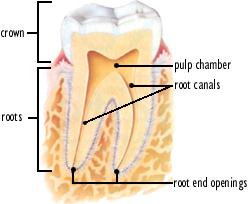
Photo 1 In teeth with more than one root, each root has its own canal that extends from the single pulp chamber
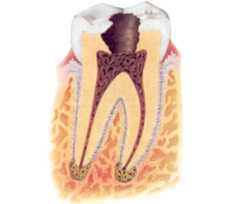
Photo 2 Toxins from pulp bacteria cause inflammation in the bone
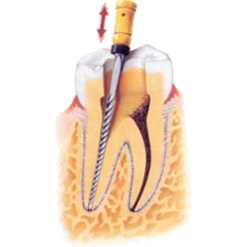
Photo 3 A file is used to clean and then shape the canals
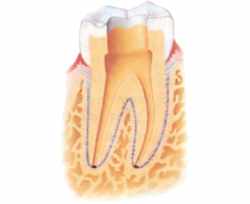
Photo 4 The canals are now prepared (shaped) to receive the root canal filling
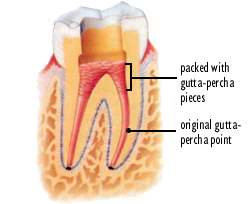
Photo 5 The dentist now packs the remaining portion of each canal with gutta-percha pieces up to the level of the pulp chamber.
Any injury, chemical, bacterial or thermal can cause these tissues to swell, but as there is little room for swelling in the centre of a tooth, an increase in pressure due to this swelling often cuts off the blood supply to the tooth and all the vital tissue in the tooth dies. You may often experience a throbbing pain as the body tries to pump blood into the tooth to help this inflammatory process.
The pulp and the tissue in the tubules become necrotic and it is now when problems start. With multi rooted teeth it is possible for the pulp in one root to die but other roots stay vital as they have separate blood supplies. This causes problems for dentists trying to diagnose whether a tooth is alive or dead. Eventually the necrotic tissue in the one root will slowly kill off the vital tissue in the other roots and the tooth is then described as dead or non-vital.
This may or may not be painful and the degree of pain felt may vary from a slight twinge, to tenderness to bite on, to a full blown toothache which you cannot believe is happening to you.
The pain is dependent on your response to the irritation and whether there is bacterial infection of the pulpal material. Bacteria cause putrefaction of this pulpal material producing gas, which increases the pressure inside a tooth and pain. White blood cells stream into the pulpal area of the tooth attacking the bacteria and producing pus and more swelling and more pain. The inflammation then spreads out of the tooth via the small foramina through which the blood and lymph pass into the tooth and effects the bone holding the tooth. Swelling here causes pressure in the bone which again is painful, and will continue until it perforates into the surrounding soft tissue or the dentist intervenes.
The dentist then has the choice to take the tooth out or to do a root treatment. Today in this technological age the dentist will offer to treat the abscess, deal with the pain and save the tooth.
This is where opinions split as to what is best to do. Do we look to save individual teeth or do we look to treat the whole patient.
The standard way to root treat a tooth is to drill a small hole into the tooth to gain access to the root canal. If the tooth is not fully dead or there is a great deal of inflammation then this procedure can be uncomfortable though often the tooth and the pulp are dead so no pain is felt. Through varying techniques of instrumenting the root canal and flushing irritant fluids down the canal the dentist hopes to remove as much of the necrotic tissue and bacteria as he can. Then a sterilising liquid is sealed into the root for a few days in an attempt to further treat the infection and necrotic tissue. Antibiotics are often given to treat the infection outside the tooth.
If the pain goes, a further visit is arranged where the dentist opens up the tooth again to finish the root treatment. They should first take an X-ray with an instrument down the tooth to establish whether they are fully down the canal and have not left any area untreated. If this is satisfactory they fill up the space where the pulp was with and inert material so no future infection can take place.
Millions of this type of treatment are done every year with an apparent success rate of over 90% i.e. no pain and healing on x-ray so the dentist and the patient are happy.
This unfortunately masks a problem which can still be occurring. It is now recognised by more and more dentists that it is impossible to clean out all of the necrotic tissue or to completely sterilise a tooth. As mentioned before there are 3 miles of tubules in the smallest tooth of your mouth and no dentist claims to clean or sterilise all of these. This then leaves areas of dead tissue in the tooth to continue decomposing and being infected. White blood cells don't travel into tubules nor do antibiotics filter into these areas so the tubules become a safe haven for bacteria and possibly fungi. They survive and feed off the necrotic tissue and whatever filters into the dentine tubules. The bacteria which colonise these tubules started as normal aerobic bacteria often from the mouth, but when they are sealed into the tooth their environment changes and they pleomorphise to become anaerobic and potentially much more harmful. Their metabolism changes and their waste products become much more toxic.
Until recently there was no scientific way of measuring the toxicity of these teeth but now using photoaffinity labelling, researchers are able to test the toxins from teeth against metabolically important enzymes such as pyruvate kinase, creatinine kinase and the results are disturbing. Of 40 root treated teeth tested 25% showed no toxins. 50% showed a toxicity as great as hydrogen sulfide and most worryingly 25% were more toxic than hydrogen sulfide. Research is now looking at what these compounds could be and how we can test for them in the mouth rather than once a tooth has been extracted.
Back in the 1920s a famous dental researcher Dr Weston Price also had doubts about root filled teeth. He observed that when root filled teeth were taken out using correct techniques then a variety of health problems improved, from arthritis to kidney problems and other degenerative diseases. This was done with hundreds of patients.
He went a step further by implanting these root filled teeth under the skin of rabbits and he observed that the rabbits then developed the same symptoms which the human patient had suffered from. He ground up these teeth and found that even the liquid filtered from these teeth brought about the same illnesses and diseases, often killing the rabbits within days. Filtrate from human non-root filled teeth had no harmful effects.
He wrote up most of his findings in two marvellous books listing all his research and concluded that root filled teeth were a source of toxins which did affect the health of patients. Unfortunately the books were effectively suppressed for 50 years until a retired endodontist ( a dentist who specialises in root treatment ) Dr George Meinig uncovered these books. He republished a shortened version of these books called Root Canal Cover-up. This is a very readable book giving much more detail on this issue. He explains how the toxins or even the bacteria themselves spill out of these teeth especially when the tooth flexes with function and can have an effect on whatever body function or organ is susceptible to that particular toxin. He explains how the theory of focal infection so popular at the turn of the century is now making a comeback and root treated teeth and tonsil tags are the main culprits.
Of equal interest is the relationship of root filled teeth to traditional Chinese medicine and body energies. All teeth are linked to the body via meridians and having a root filled tooth or a large amalgam filling on a meridian may block energy flow ( the chi ) along this meridian and cause a dis-ease in an organ or body function remote from the tooth. For example a front upper incisor is on the Kidney Bladder meridian and having a root treated tooth here may cause gynaecological problems, kidney problems, impotence, sterility if you follow a Chinese medicine theme. These teeth also relate to spinal segments and joints, the front incisor relates to the coccyx and posterior knee and to L II, III, S III, VI.
This energetic relationship between teeth and the rest of the body is opening whole new avenues of dental care and the chance for dentists to work with other complementary health workers
There are charts available which illustrate the relationship between teeth organs and disease.
We are also seeing problems where root treated teeth have been removed there is poor healing in these areas. Although the tooth has gone it is still painful in these areas and this area may still energetically interfere with the associated meridian. Some dentists are trained to look for these areas on X-rays and when these areas are treated they can also bring considerable improvements in patients health.
As a dentist I now have a problem of whether to save a tooth, or potentially harm a persons health on several levels. Of equal concern is what to do with teeth which are already root treated!
Extraction of these teeth is seen as the only option by some dentists, others prefer to remove the old root filling, if that is possible and to use medicines such as Tea tree oil or Propolys to sterilise the teeth. This is a compromise, done as an in between option between extraction and doing nothing. Each case should be assessed on the ease of retreating and the health of the patient. Many root filling materials contain mercury or cadmium, not materials a dentist concerned with biocompatibility would use. There are instances now where we do still root treat or retreat teeth and change the materials we use, one material, calcium oxide does seem to be promising.
No one can say for certain if a particular root treated tooth is causing you a specific health problem though there are several ways of confirming suspicions. Kinesiology is one therapy where you can localise a problem tooth to see whether it affects overall body strength. If you then hold a homoeopathic remedy for necrotic pulp and the strength returns then there is a good chance that this tooth is affecting health. The use of Vega machine and more sophisticated systems such as the Accupro and the Listen system can on an energetic level determine if individual teeth are stressing that particular person and which tissue or area is being affected.
It is possible to send an extracted root filled tooth to the USA to see whether it did contain toxins though this does not prove a definitive link to the diseases a person may have had.
As this issue is more thoroughly investigated I think that more complementary health practitioners will investigate their patients' dental history and work with dentists. The removal of mercury amalgams and root treated teeth can significantly help recovery to wellness.
Further Information
For a list of dentists who are aware of these matters please contact
Dr John Anderson, British Academy of Biological Dentists, Penclawdd Dental Practice, 4 West End, Penclawdd, Swansea.
Root Canal Cover-up by George Meinig BION publishers ISBN 0-945196-19-9
A Cure for all Cancers Hulda Clark Internet http://www.hugnet.com or http://www.Bioprobe.com
Also look up Gerson Therapy and the relationship of root filled teeth and cancer. Please see also June Butlin's column, on the following page, regarding the Gerson Therapy.
For further information about testing teeth for toxins and other testing contact Dr John Roberts.
Comments:
-
Moutse said..
Thank you! It's very interesting!
-
helen warren said..
I ap what appears to be suffering from mercury poisening in my fillings. I have seen many specialists over the last 12 Months. I have number teeth, numb face, pins and needles, depression, anxiety metalic taste in my mouth, head aches repeated urine infections, dizziness and so on. No one says there is anything wrong with me. I have had an MRI of my head, been to the Maxillo facial clinic, seen two ENT guys nothing. I would be interested in your thoughts. I am an NHS patient in Llanelli. thanks
-
Tricia said..
I have been sick for years with a lot of problems, but my main one being coughing. Six of my amalgams have been removed, and I am doing great. I have four more to go. Find a good holistic dentist in your area, and get them removed, or contact me, and I will give you the name of mine. Good luck! My dentist also performs Kinesiology.
-
Trevor Prerry said..
Root canal filling materials do not contain mercury and cadmium. They comprise gutta percha from natural rubber, zinc oxide and barium sulphate. Lead salts were used long ago to provide radio-opacity instead of the zinc and barium.
http://www.ncbi.nlm.nih.gov/pubmed/2098460
Extraction of an abscessed tooth leads to more problems in terms of dentures and implants. Endodontic treatment by a skilled professional using an operating microscope, using repeated digital x-rays taken by CCD-sensor (lower patient X-ray exposure: 1/5th to 1/10th that of film), is currently a better solution than pulling a tooth.